Blog home / On The Couch with Mountaineer Soren Kruse Ledet
Soren Kruse Ledet is an Australian high-altitude mountain guide based in the Blue Mountains, Australia. For the past 25 years, he has led and participated in more than 60 mountaineering expeditions and challenging treks in Nepal, Bhutan, Pakistan and Tibet.
We sat down with Soren and delved into his mountaineering experience, from the very early stages of his mountaineering career - a World Expeditions trek to K2 base camp in Pakistan with Greg Mortimer, to a technical and memorable ascent of Ama Dablam and a very challenging unassisted attempt to climb Everest where he reached 27,500 ft.
Soren gives us an insight into what it is about mountaineering that keeps him coming back for more, how he pushes through challenging times and transcends psychological and physical barriers. Keep reading for a wonderful insight into the world of a passionate mountaineer.
Soren has been leading trips such as the Peak Lenin Expedition, Bhutan Snowman Trek and San Valentin Expedition, check out on which trips you can join him in the future.
You have been mountaineering for over 20 years and your lifelong passion for mountaineering started with your first World Expeditions trips in your early 20's. Can you tell us about your first experiences with mountaineering?
My passion for adventure and travel saw me leave my native Denmark on a year long round the world trip in 1989/90. One of the many highlights on this journey was a brilliant trek to K2 base camp in Pakistan which was an incredible introduction to the amazing mountains of the Karakoram Range.
The trip was in fact organised by what is now World Expeditions, formally known as Australian Himalayan Expeditions. The trek leader was a very competent and knowledgeable guy called Greg Mortimer [the first Australian to summit Mount Everest with Tim Macartney-Snape in 1984]. Of course I had no clue I was in the presence of Australian climbing royalty!
My first mountaineering experience...
...was a few years later in 1993 on an epic Rolwaling Valley, Tashi Laptsa and Gokyo Ri trek in Nepal. We were given the option of climbing a 6187m peak called Pachermo just off the 5755m Tashi Laptsa pass. With that in mind, our expedition leader Gary Hayes suggested I hire some plastic boots, but I declined and so a few weeks later I found myself with incredibly cold toes climbing up the northwest face of the mountain.
Our small roped team of five made good progress up a broad steep slope and were approximately 2/3 of the way up when all of a sudden the serenity was shattered by what sounded like an explosion. We watched with alarm as a large 1ft crack appeared in front of us cutting the slope clean in half and leaving two of us in a precarious position below the crack.
It wasn’t long after that Gary sensibly decided to call it a day and we very carefully made our way back down to the pass.
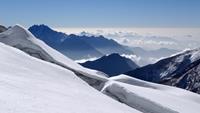
Since you have had more than 15 years of Himalayan mountaineering experience guiding for World Expeditions and have led many climbs and treks in Nepal, Tibet, China and Bhutan. What is it that draws you to the mountains and what keeps you coming back for more?
I love the simplicity of life when I’m in the mountains; challenging my physical ability and mental strength towards achieving my goal, whatever that might be.
Working as part a team while at the same time being self-sufficient is very rewarding. Bottom line is I just love being in the mountains. The feeling of insignificance when passing beneath some of the biggest mountains on earth is humbling. I love working with the Nepalese people and admire their work ethic and sense of humour even when confronted with very challenging circumstances.
What has been your most memorable mountaineering expedition and why?
I would have to say Everest in 2011 but my first ascent of Ama Dablam in 2004 with my Nepali climbing partner Dhana Rai is a close second.
I loved the exposure on Ama Dablam, the steepness and technical challenges and having spent so many years looking at it from the valleys below, it was great to finally set foot on this amazing looking mountain.
Everest was more impressive, more enormous and more beautiful than I could ever have imagined. A couple of times I found myself wandering completely alone (like an ant in a bathtub) through the Western Cwm between C1 and C2 and was struck by the complete silence in this gigantic valley.
Coming around the Geneva Spur and looking at the summit pyramid was incredible. The fact that I didn’t summit and abandoned my summit bid at the Balcony at 8400m does in no way diminish the experience.
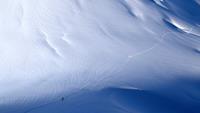
In 2011 you attempted to summit Everest on a solo climb but got stuck at the ‘Balcony’. Why Everest? How did you get stuck? Would you attempt it again?
I think that if you spend enough time in the Himalayas then sooner or later you’ll find yourself gravitating towards Everest; it is after all the highest point on earth and if you can look past the circus surrounding the mountain you will still have an amazing climbing experience.
My trip to Everest became a solo climb (with no sherpa support) after my climbing partner Matt Carlin was forced to return home after injuring his Achilles tendon. Having completed my rotations on the mountain and stocking the various camps I was finally ready for my summit bid and arrived on the South Col/C4 around midday on May 11th. The weather forecast was very encouraging with winds predicted at around 5-10km/h and the temperature at minus 30˚C; pretty close to perfect conditions.
Departing the South Col later that night and starting up the Summit Pyramid with 3 bottles of oxygen in my pack I remember feeling completely at ease and really confident I was going to succeed. Well approximately 1 ½ hours before I reached a feature called the Balcony and the point where you first step onto the Southeast Ridge the wind started to pick up and by the time I got to the Balcony itself it was blowing at 50-60km/h.
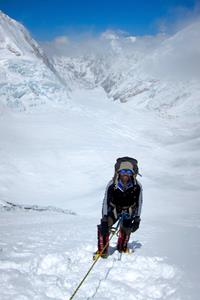
The Balcony (a small platform only a couple of meters away from the Kangchung Face and a 3000m vertical drop) is traditionally where you change your oxygen cylinder and so there I was, completely alone, in the middle of the night at 2.30am on May 12 doing just that; kneeling down in the snow and unscrewing my regulator with the wind howling around me when suddenly my fingers went completely numb and everything went pear-shaped.
You try and prepare yourself for every situation you may encounter and I certainly approached this expedition with my eyes wide open and fully aware of the risks involved. Because of my background as a mountain guide and having been on numerous mountaineering trips I was confident in my decision-making and ability to function at altitude. What shocked me was how quickly I lost the use of my fingers as they became these useless claws.
To continue up was out of the question and my primary focus was restoring circulation to my digits, which I managed to do over the course of the next hour or so mainly by some choice swearing in Danish and English.
I did have a second attempt a week later on May 20th but once again I turned back when I got to the Balcony; I was simply too weak and besides progress was incredibly slow due to a large number of people on the fixed ropes. Returning to Everest is not something I desire and I’ll be quite happy and content if I never go back to the mountain.
What are the core qualities of a successful mountaineer?
Knowing when to turn back.
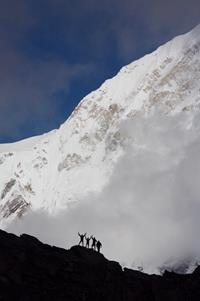
Mountaineering is extremely physically and mentally tough. How do you push past physical and mental barriers? What do you do when things get tough and how do you keep moving forward?
In my role as expedition leader I draw strength from being responsible for my team members. If I have done it before I can do it again.
Never underestimate your physical preparation for a trip, so train hard. Try not to let yourself be mentally overwhelmed by what you’re about to do. Which by the way can be easy to do when standing at base camp looking up at a peak like Ama Dablam.
Do your research and break your climb down into manageable chunks. Consider each camp on the mountain a summit, and while you are on the mountain economize your energy output with slow deliberate movement. You might be moving slow at altitude but the point is you’re still moving. Hopefully in the right direction. You may not get it right all the time and that’s ok.
The point is you’re having a go and learning about what you’re capable of in the process. Understand and accept that things don’t always go to plan on mountaineering expeditions, so be flexible in your mindset. Self-sufficiency is fundamental to your mountaineering longevity so do yourself a favour and learn the basic skills. Amazing things can be achieved when your platform is solid.
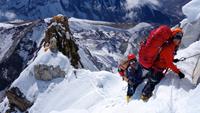
How do you adjust back into the ‘real world’ after spending so much time in the serenity of the mountains during an expedition?
It is difficult but ultimately I don’t really have a choice. My family responsibilities dictate that I’m present when I return home.
It is definitely a reverse culture shock to suddenly find myself in aisle 6 of the local supermarket doing grocery shopping when only just the week before I was in the mountains.
So if you happen upon a guy looking a bit lost in the condiment section give him a hug. I’d like to think that I can compartmentalize my work as a mountain guide but probably best to ask my family how successful I actually am in doing so.
What tips would you give someone who is interested in starting mountaineering and wants to go on their first mountaineering trip?
Do it ! As Mark Twain famously said...
Twenty years from now you will be more disappointed by the things you didn’t do than by the ones you did do. So throw away the bowlines. Sail away from the safe harbor. Catch the trade winds in your sails. Explore. Dream. Discover.
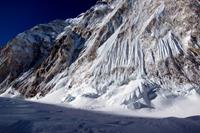
What type of physical activities do you do to train and prepare for a climb?
I maintain a good base fitness by doing regular exercise 4-5 times a week; jogging, bike riding, bush walking, stairs in the local park, core and strength work. It is a routine that seems to work well for me.
Much is written about training regimes for mountaineering so without being too technical and specific I encourage you to get out there and train hard. Be as fit as you possibly can be, especially for your first trip. Over time you will learn how your body performs at altitude and you can then adapt your training accordingly.
Stepping onto the ice-field for the first time and looking out across this incredibly wild landscape of snow and ice blew me away and the idea to return with a mountaineering expedition to San Valentin was formed there and then. The fact that is so remote and inaccessible is definitely a major attraction.
You have been and will be guiding our expedition to Peak Lenin - the second highest mountain in the Pamir mountain range at an altitude of 7134m situated on the Tajikistan and Kyrgyzstan border. What makes this trip so special to you?
It is always exciting to be visiting a new part of the world and I hear there’s vodka and even a sauna at base camp.
Peak Lenin is a popular and non-technical climb for those who wish to climb over 7000m for the first time. What kind of experience would you expect people to have before they join this expedition?
Prior altitude experience is a must and all participants must be prepared to do their fair share of load carrying as we work to establish the various camps high on the mountain. While not technically difficult it is a serious mountain nonetheless and should not be underestimated.
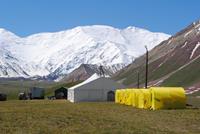
Lastly, how do you manage fear when mountaineering?
Mountaineering and climbing is very much about being outside or at the very least right on the edge of your comfort zone; it’s about pushing and exploring your own physical and psychological boundaries. It takes courage to push yourself to the unknown.
On a commercial trip it takes courage to place your trust in the guides and Sherpas looking after you. You can’t have courage without fear. There’s nothing wrong with being fearful and to me it demonstrates an awareness and respect for the environment and your surroundings. It sharpens your senses.
The point is not to let the fear control and consume you because that will ultimately result in some very poor decision-making. I guess my experience on the Balcony is a good example of how a very bad situation could have deteriorated even further had I panicked.
>> Join Soren on one of his future trips.